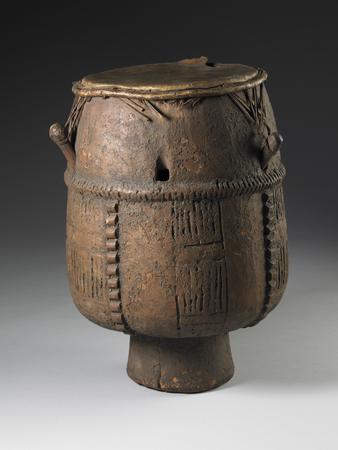

-
Happy 67th Independence Day to Ghana #ghana #independenceday #march6 #independence· 0 Yorumlar ·0 hisse senetleri · ·3

-
"The Alpha Kappa Mu National Honor Society (ΑΚΜ) is an American collegiate honor society recognizing academic excellence in all areas of study.
Alpha Kappa Mu was founded on November 26, 1937 at Tennessee A&I State College. Alpha Kappa Mu Honor Society grew out of an idea conceived by Dr. George W. Gore, Jr., then Dean of Tennessee A & I State College. Representatives from five colleges which already had local scholastic honor societies on their campuses met in November 1937, to study Honorary Scholastic Societies at the invitation of Dr. Gore. The formation of "The Federation of Honor Societies" was the outgrowth of this meeting.
The Executive Committee chosen for this Federation was:
Dean James C. Evans, West Virginia State College, Chairman
Miss Georgia L. Jenkins, Tennessee A & I State College, Secretary-Treasurer
Dean W. T. Gibbs, North Carolina A & T College
Dr. W. E. Farrison, Bennett College
Dr. George W. Gore, Jr., Tennessee A & I State College
The original goal of the honor society was to promote and reward academic excellence among African-American students. Due to its roots, most Alpha Kappa Mu chapters are located at Historically Black Colleges and Universities, though some can be found at predominantly white colleges; today acceptance of new members is race-blind.
A biennial convention is held during odd years, in March, at a rotating selection of universities.
The Society has grown to approximately 92,000 members affiliated with 79 different chapters. Most chapters are found in the South and Midwest, and the majority are at public colleges and universities.
Alpha Kappa Mu was admitted to the Association of College Honor Societies in 1952.
Juniors, seniors, and graduate students are permitted to join with a minimum GPA of 3.3."
Source:
https://en.m.wikipedia.org/wiki/Alpha_Kappa_Mu
#bhm #blackhistorymonth #blackhistory #scholars #academics #honors #honorsociety"The Alpha Kappa Mu National Honor Society (ΑΚΜ) is an American collegiate honor society recognizing academic excellence in all areas of study. Alpha Kappa Mu was founded on November 26, 1937 at Tennessee A&I State College. Alpha Kappa Mu Honor Society grew out of an idea conceived by Dr. George W. Gore, Jr., then Dean of Tennessee A & I State College. Representatives from five colleges which already had local scholastic honor societies on their campuses met in November 1937, to study Honorary Scholastic Societies at the invitation of Dr. Gore. The formation of "The Federation of Honor Societies" was the outgrowth of this meeting. The Executive Committee chosen for this Federation was: Dean James C. Evans, West Virginia State College, Chairman Miss Georgia L. Jenkins, Tennessee A & I State College, Secretary-Treasurer Dean W. T. Gibbs, North Carolina A & T College Dr. W. E. Farrison, Bennett College Dr. George W. Gore, Jr., Tennessee A & I State College The original goal of the honor society was to promote and reward academic excellence among African-American students. Due to its roots, most Alpha Kappa Mu chapters are located at Historically Black Colleges and Universities, though some can be found at predominantly white colleges; today acceptance of new members is race-blind. A biennial convention is held during odd years, in March, at a rotating selection of universities. The Society has grown to approximately 92,000 members affiliated with 79 different chapters. Most chapters are found in the South and Midwest, and the majority are at public colleges and universities. Alpha Kappa Mu was admitted to the Association of College Honor Societies in 1952. Juniors, seniors, and graduate students are permitted to join with a minimum GPA of 3.3." Source: https://en.m.wikipedia.org/wiki/Alpha_Kappa_Mu #bhm #blackhistorymonth #blackhistory #scholars #academics #honors #honorsociety· 0 Yorumlar ·0 hisse senetleri · ·1
-
Nya Akoma 🖤
Happy Black Love Day
#blackloveday #blacklove #nyaakoma #akoma #haveaheart #johnhenry #pollyanne #blackhistorymonth #blackhistoryNya Akoma 🖤 Happy Black Love Day #blackloveday #blacklove #nyaakoma #akoma #haveaheart #johnhenry #pollyanne #blackhistorymonth #blackhistory0 Yorumlar ·0 hisse senetleri · · -
The Akan Drum is an old drum originally produced in Ghana. It made its way across the Atlantic Ocean and was found in Virginia, having been covered with the skin of a local deer. The drum was produced sometime between 1730-1745. An Apentema drum, it is the oldest African-American object currently housed at the British Museum and was part of the museum's founding collection. It is made of of two different types of wood that are both native to Africa, Baphia and Cordia africana. It was initially collected on behalf of Sir Hans Sloane, and is included with other objects at the museum as part of the Sloan collection. It was assumed for several centuries to have been made by Native Americans but its African provenance was fully established in the 1970s. Who it originally belonged to, as well as what was the reasoning to bring it across the Atlantic is unknown. The identity of its owners in colonial Virginia was not recorded and as such is unknown.It is assumed to have made its way via a slave ship, though which ship if indeed so remains unverified.
British Museum link:
https://www.britishmuseum.org/collection/object/E_Am-SLMisc-1368?fbclid=IwAR1xrzha4ek5fnsIU4LbflFWxivFpJPeBazy1-sWV50UBAnQKXGI8bAFLx0
#bhm #blackhistory #blackhistorymonth #akandrum #africanamericanThe Akan Drum is an old drum originally produced in Ghana. It made its way across the Atlantic Ocean and was found in Virginia, having been covered with the skin of a local deer. The drum was produced sometime between 1730-1745. An Apentema drum, it is the oldest African-American object currently housed at the British Museum and was part of the museum's founding collection. It is made of of two different types of wood that are both native to Africa, Baphia and Cordia africana. It was initially collected on behalf of Sir Hans Sloane, and is included with other objects at the museum as part of the Sloan collection. It was assumed for several centuries to have been made by Native Americans but its African provenance was fully established in the 1970s. Who it originally belonged to, as well as what was the reasoning to bring it across the Atlantic is unknown. The identity of its owners in colonial Virginia was not recorded and as such is unknown.It is assumed to have made its way via a slave ship, though which ship if indeed so remains unverified. British Museum link: https://www.britishmuseum.org/collection/object/E_Am-SLMisc-1368?fbclid=IwAR1xrzha4ek5fnsIU4LbflFWxivFpJPeBazy1-sWV50UBAnQKXGI8bAFLx0 #bhm #blackhistory #blackhistorymonth #akandrum #africanamerican· 0 Yorumlar ·0 hisse senetleri · ·1
-
The Guitarra morisca or Mandora medieval is a plucked string instrument. It is a lute that has a bulging belly and a sickle-shaped headstock. Part of that characterization comes from a c. 1330 poem, Libro de buen amor by Juan Ruiz, arcipestre de Hita, which described the "Moorish gittern" as "corpulent". The use of the adjective morisca tacked to guitarra may have been to differentiate it from the commonly seen Latin European variety, when the morisca was seen on a limited basis during the 14th century.
Appeared[sic] in the early 9th century, it is an instrument mentioned in the Cantigas de Santa Maria, and by Johannes de Grocheio (towards 1300) who called it quitarra sarracénica. In the 14th century it is known by the term "guitarra morisca", coined by Arcipreste de Hita in Libro de buen amor. It is a hybrid instrument between the guitarra latina and medieval lute, usually played by fingers or plectrum.
It has roots in the four-string Arabic oud, brought to Iberia by the Moors in the 8th century. The guitarra morisca is a direct ancestor of the modern guitar. By the 14th century, the guitarra morisca was simply referred to as a guitar.
The guitarra morisca is an obscure instrument, known mainly from pictures. Early instrument expert Francis William Galpin mentioned the instrument in his book, Old English Instruments of Music (pages 21-22), calling it the "Guitare Moresca" or "Chittara Saraacenica", with its "long neck, oval shaped body and round back." He also felt it related to the Colascione.
https://en.m.wikipedia.org/wiki/Guitarra_morisca
#blackhistorymonth #bhm #moor #moorish #amazigh #imazighen #maghreb #westafrica #africanhistory #alandalus #guitar #music #musichistory #guittaramoriscaThe Guitarra morisca or Mandora medieval is a plucked string instrument. It is a lute that has a bulging belly and a sickle-shaped headstock. Part of that characterization comes from a c. 1330 poem, Libro de buen amor by Juan Ruiz, arcipestre de Hita, which described the "Moorish gittern" as "corpulent". The use of the adjective morisca tacked to guitarra may have been to differentiate it from the commonly seen Latin European variety, when the morisca was seen on a limited basis during the 14th century. Appeared[sic] in the early 9th century, it is an instrument mentioned in the Cantigas de Santa Maria, and by Johannes de Grocheio (towards 1300) who called it quitarra sarracénica. In the 14th century it is known by the term "guitarra morisca", coined by Arcipreste de Hita in Libro de buen amor. It is a hybrid instrument between the guitarra latina and medieval lute, usually played by fingers or plectrum. It has roots in the four-string Arabic oud, brought to Iberia by the Moors in the 8th century. The guitarra morisca is a direct ancestor of the modern guitar. By the 14th century, the guitarra morisca was simply referred to as a guitar. The guitarra morisca is an obscure instrument, known mainly from pictures. Early instrument expert Francis William Galpin mentioned the instrument in his book, Old English Instruments of Music (pages 21-22), calling it the "Guitare Moresca" or "Chittara Saraacenica", with its "long neck, oval shaped body and round back." He also felt it related to the Colascione. https://en.m.wikipedia.org/wiki/Guitarra_morisca #blackhistorymonth #bhm #moor #moorish #amazigh #imazighen #maghreb #westafrica #africanhistory #alandalus #guitar #music #musichistory #guittaramorisca0 Yorumlar ·0 hisse senetleri · · -
Eight years after Big Karnak, gaming would see its first Black female protagonist to head her own game(as well as the first playable female character that was African-American). D'Arci Stern debuted in the 1999 game Urban Chaos, the first game by developer Mucky Foot Productions.
Urban Chaos was an action adventure game set in the fictional Union City. It utilized a third person perspective, a unique fighting system and allowed Stern to either kill or arrest perpetrators.
As a newly minted cop with the Union City Police department, D'arci is charged with cleaning up crime in the area, leading her into a growing feud with the Wildcats, one of the city's major gangs who would become the overarching antagonists of the story.
Urban Chaos received positive reviews upon its release for computers. Later ports to console systems were not as well received due to issues with the controls and camera.Eight years after Big Karnak, gaming would see its first Black female protagonist to head her own game(as well as the first playable female character that was African-American). D'Arci Stern debuted in the 1999 game Urban Chaos, the first game by developer Mucky Foot Productions. Urban Chaos was an action adventure game set in the fictional Union City. It utilized a third person perspective, a unique fighting system and allowed Stern to either kill or arrest perpetrators. As a newly minted cop with the Union City Police department, D'arci is charged with cleaning up crime in the area, leading her into a growing feud with the Wildcats, one of the city's major gangs who would become the overarching antagonists of the story. Urban Chaos received positive reviews upon its release for computers. Later ports to console systems were not as well received due to issues with the controls and camera.0 Yorumlar ·0 hisse senetleri · ·
Daha Hikayeler





